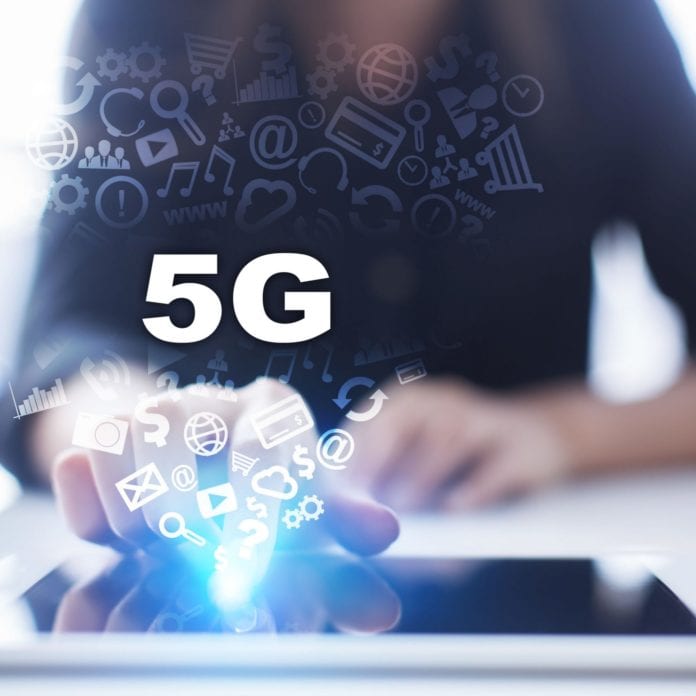5G is definitely fast and has a lot of potential, but it’s still in its infancy as far as technologies go — it needs time to mature and get past its early growing pains, according to a new report on U.S. 5G networks from RootMetrics.
Sprint was the only carrier with “meaningful 5G presence” in all three of the U.S. cities where RootMetrics took an early look at 5G deployment — but the test results overall were a “mixed bag” and sometimes Sprint’s LTE network actually tested faster than its 5G deployment, RootMetrics found. Verizon delivered the fastest overall speed with AT&T close behind, but footprints were llimited. For example, IHS Markit’s testing company found that in Dallas, AT&T’s 5G median download speeds was more than 13 times as fast as its LTE median download speed in the city — but availability was very limited, with devices connecting to 5G less than 3% of the time. T-Mobile US, meanwhile, clocked some impressive maximum 5G speed but its 5G median speed was slower than its LTE network median speed.
“While there is justifiable excitement surrounding 5G, initial test results suggest that several early growing pains must be worked out,” the report said. “This shouldn’t a surprise, nor should it dampen enthusiasm for the possibilities that 5G will eventually bring. New technologies and infrastructure almost always need time to mature in order to reach their full capability.”
The testing company performed smartphone-based walk- and drive-tests of 5G in indoor and outdoor locations in tourist areas, business districts, and other “high-population areas” in Atlanta, Georgia; Chicago, Illinois; and Dallas, Texas. RootMetrics conducted between 6,000 and 7,000 tests in each of the three markets on 5G-enabled Samsung and LG devices. Tests were performed during peak traffic hours and were “designed to represent the end-user’s real-world 5G data experience,” the company noted.
Among the report’s data points:
-5G deployments varied across carriers’ spectrum holdings, but there weren’t many surprises here. AT&T is operating its 5G network in Dallas using its millimeter wave spectrum; Verizon is using its millimeter wave spectrum for 5G in Chicago, and Sprint was using its 2.5 GHz spectrum for 5G in all three cities. T-Mobile US has talked about 600 MHz as part of its strategy to deploy 5G nationwide, with mmwave adding capacity in urban areas; it is using its millimeter wave holdings for 5G deployment in Atlanta.
-Verizon was the only carrier whose 5G network tested at speeds above 1 gigabit per second in the downlink, in a test conducted in Chicago. Verizon’s 5G speeds in general were “outstanding and indicate a strong foundation,” RootMetrics said, although it noted that devices connected to 5G only about 7% of the time.
-AT&T delivered a maximum 5G network speed of nearly 670 Mbps in Dallas and a median 5G download speed of about 256 Mbps.
-T-Mobile US’ 5G deployment had mixed results as well — overall, its LTE is generally faster than its 5G at this point. The carrier’s fastest maximum download speed among the three tested cities was in Atlanta, on a device in non-5G mode. That figure was 388.5 Mbps, while T-Mo’s 5G came in at 257.7 Mbps. But T-Mobile US’ maximum 5G speed in Dallas was just 18.5 Mbps (compared to non-5G max speeds of around 220 Mbps in the same city), which RootMetrics said “could be a result of connecting to T-Mobile’s 5G network only 1.3% of the time during testing.”
-Sprint’s mid-band spectrum could be a big boon. The carrier had the highest 5G availability across the three cities tested. RootMetrics noted that it observed from its testing in the U.S. and South Korea that Sprint’s 2.5 GHz spectrum “has remarkably similar propagation characteristics to the 3.5 GHz spectrum utilized by all three South Korean operators. … This similarity in spectrum potentially portends good things for Sprint’s 5G network because speeds in South Korea were incredibly fast in general and much faster than what we found in the U.S.”
-RootMetrics expects to see 76.2 million 5G-enabled handsets in 2020, with that number ramping up to more than 600 million by 2025.
Overall, RootMetrics said, 5G “can be extremely limited upon initial launch, and without a strong 5G presence, those eye-catching speeds you may be looking for could take a bit longer than expected to become a reality.”
The report noted that RootMetrics plans to do additional testing of early 5G deployments in additional U.S. markets, as well as in the U.K. and Switzerland.

